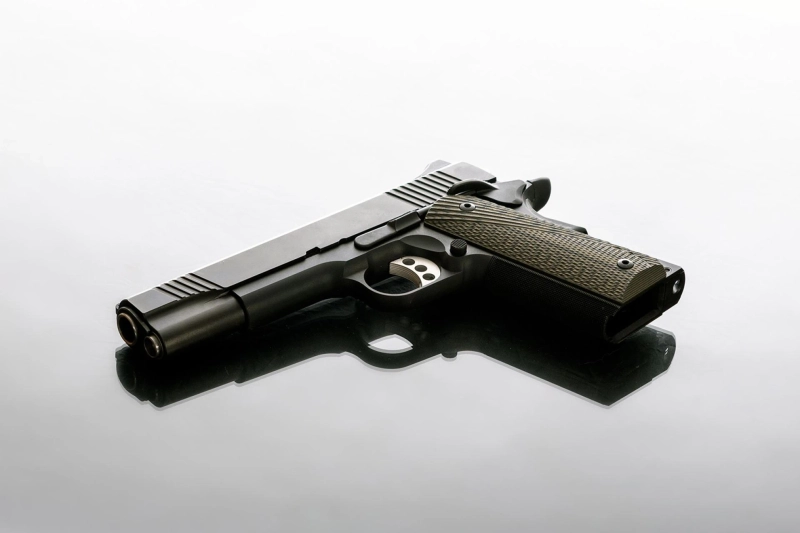The safety might be the most important part of any firearm. It’s also vital that you understand the safety mechanism of any handguns you might use. There are a few different types of handgun safeties, and you must be able to identify and use each type correctly. From internal safeties to grip or hammer safeties, it’s essential to know how each works before you hit the range.
Engage a Grip Safety with Your Palm
A grip safety, as the name implies, is a safety that is part of the handgun’s grip. If you aren’t holding the gun, the safety is engaged, and you have to squeeze the grip to disengage it before you can mag dump your bulk ammo. The aim of the design is to avoid accidental discharge, preventing you from pulling the trigger if you aren’t holding the gun properly. When gripped properly, your palm will push the safety in. This type of safety is often found in the iconic 1911.
Flip a Lever or Thumb Safety
One of the most common handgun safeties is the lever or thumb safety. You will likely find a lever near the back of the slide or frame of 9mm handguns. Flipping it with your thumb will block the trigger or hammer. On most single-action handguns, the hammer must be cocked before you can engage the safety. It can be used at any time with most double-action or striker-fired handguns.
Pull a Trigger Lever Safety
The trigger lever safety remains engaged by default, like the grip safety, and disengages once you pull the trigger properly. To disengage the safety, you must fully press the safety into the trigger bow. This then releases the hammer or striker, significantly lowering the odds of an accidental discharge, especially from the trigger snagging on a holster of clothing. Trigger safeties are becoming more popular with firearms manufacturers.
Drop Safeties Prevent Accidental Discharges
Historically, if a handgun was dropped with a round in the chamber, it could result in an accidental discharge. The impact rattles the firing mechanism, causing the gun to fire. It’s why cowboys often rode with only five rounds in a six-shooter. The drop safety was invented to prevent these accidental discharges, physically locking the firing mechanism within the frame or receiver. These are still common, as states like California require drop safeties in all newly manufactured firearms.
Magazine Disconnects Require a Mag
Another law in some states requires a magazine to be in place before you can pull the trigger. The idea is to prevent the accidental discharge of any round left in the chamber. One of the key tenets of proper firearm handling is clearing the chamber and ensuring no round is left. However, this safety mechanism provides an extra layer of protection, helping everyone stay safer.
About Cheaper Than Dirt!
For decades, Cheaper Than Dirt! has been the one-stop destination for high-volume shooters, offering everything they need to take their performance to the next level. From bulk ammo to premium firearms, they have it all. Cheaper Than Dirt’s aim is simple: provide shooters with an impressive selection, excellent prices, and outstanding service so they can make the most out of every range trip. When you shop with Cheaper Than Dirt, you know you’ll find the products you need at unbeatable prices. Whether you’re training for a competition or tired of overpaying at the big box store, turn to Cheaper Than Dirt!
Explore Cheaper Than Dirt’s full selection of firearms at https://www.cheaperthandirt.com/
Original Source: https://bit.ly/3Osvr52
5 Types of Handgun Safeties to Know



